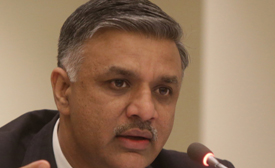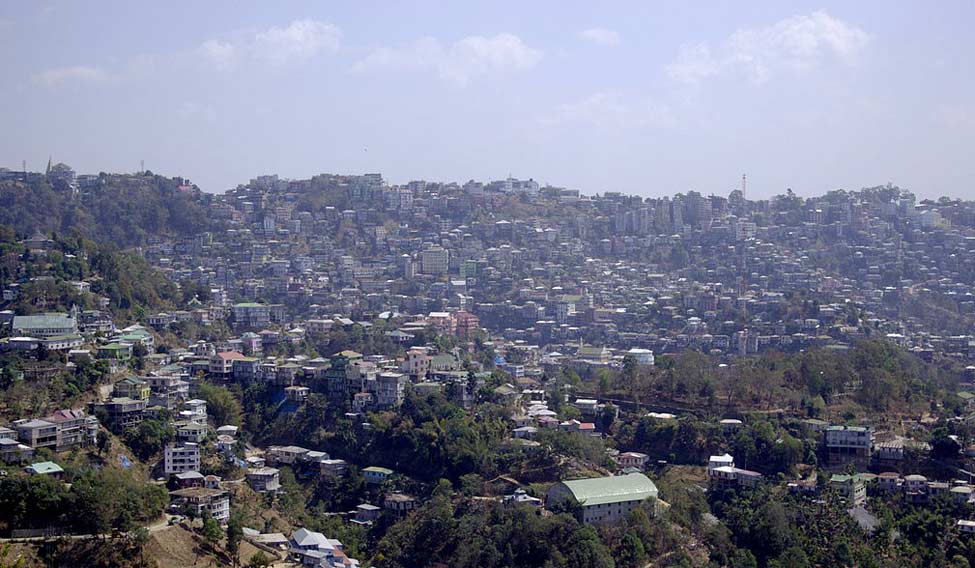The northeast region (NER) of India can be a hub to facilitate development cooperation across the border with countries in the immediate neighbourhood and even with those located a little beyond. The possibility of synergies between the developmental activities planned for the NER of India and India’s initiatives under development cooperation with the countries in the immediate neighbourhood like Myanmar, Nepal, Bangladesh and Bhutan are immense. India’s engagement with countries beyond the immediate neighbourhood – Cambodia, Laos PDR and Vietnam—has also been increasing rapidly.
Expectedly, the mutual benefit accruing to India from such development cooperation activities will spill over in a more than proportionate manner to the northeastern states of India. For such an effort to fructify, it is necessary that a clear convergence between India’s 'Act East Policy' and 'North Eastern Region Vision 2020' is established. Such a convergence can be achieved only when a thorough ground level one-on-one mapping of interventions both within the NRE and in the neighbourhood are carried out.
Against this background, the most important issue is to explore new dimensions with our neighbouring countries for developing physical and virtual connectivity. However, the ground reality is that even the inter-regional mobility needs to be strengthened by overcoming constitutional and administrative impediments because its absence is holding back the integration of the region.
Besides connectivity, education and health are significant areas which need to be focused. Despite several reforms in the education sector, the region still witnesses outflow of students. Each year, about 700 to 800 students move to China for medical education. Besides, the supply gap with other states is also something to worry about. For instance, in the case of Manipur, about Rs. 1,500 crore is flowing out of the state in the terms of medical treatment or in the form of outflow of students. If we extrapolate that for all the eight states in the region, the figures may be startling. Health and education are intertwined and feed each other for achieving human resource development in the region.
In order to evolve policy cohesion on various aspects of development in NER, priority areas should be identified on those contemporary research is required. This would necessitate updating the district level data which could be the basis for moving ahead with future research agenda. In this regard, it is also required to have a comprehensive understanding of cross-border development connect with neighbouring countries and also with other districts.
In the context of promoting health sector in the NER, the role of traditional medicine is also important. In this regard, the ministry of AYUSH should undertake a quick survey of the pertinent issues related to traditional medicine in India and the neighbouring countries. The recently-launched Forum for Indian Traditional Medicine (FITM) at RIS can join hands with state governments in NER to work further in this area.
Trade is another area that calls for immediate review. With respect to trade of northeastern states with the neighbouring countries, it is important to examine the current trade pattern and the types of goods imported by those states. Even the domestic utensils are being imported from the neighbouring countries. This necessitates supporting local production base for which necessary steps to attract investments in NER are warranted. On 'border haats' (border markets), the ministry of commerce and industry (MOCI) has accorded priority to these issues. In fact, MOCI is supporting the handicrafts and artisans in the NER.
This pattern of trade is better explained by the Prebisch-theory of trade which essentially analyses how countries export raw materials and end up importing finished products, thereby affecting the terms of trade and perpetuates inequality in primary commodity-exporting countries. This adverse pattern of trade in northeast needs to be addressed. In this context, the idea of regional and global value chains becomes immensely important. However, lack of trade infrastructure in the NER affects the prospects of the northeastern states realising the gains from those supply chains.
From that angle, it would be in the larger interests of the region to assess the reasons for the low level of physical and trade infrastructure in the NER. To be specific, what is that the Central government offering to support for creating infrastructure in the region and why are the local agencies not availing this facility?
The issue of corruption is also adversely affecting the development process of the NER. It is high time to discuss about the role of vested interests when they want to monopolise the rent-seeking activity. Efforts should be made in the context of Schedule VI of the Indian Constitution to entrust the village panchayats to commit certain portion of their common land for development projects. So far, this approach has been followed by two regional states like Meghalaya and Mizoram. Other states in NER may consider of implementing this model.
 Sachin Chaturvedi
Sachin Chaturvedi
In a nutshell, all the above mentioned issues are crucial determinants of the development of the NER. NER is vital for India’s ‘Act East Policy’, but at the same its own development is the a national responsibility. In this regard, all stakeholders should be brought on a single platform to find solutions to the impediments in the process of development of the NER. In order to consolidate efforts to develop the region, RIS may initiate consultations with NITI Aayog, Ministry of Development of North Eastern Region (DoNER) and state governments in NER. Moreover, these three entities are the key three actors in the development process of the region along with those who are supporting other agencies for start-ups, technology viability, financial viability, and other related purposes. The proposed coordination mechanism between the DoNER and the Northeastern Council may be an important game changer in this direction.
(The author is director general, Research and Information System for Developing Countries)





